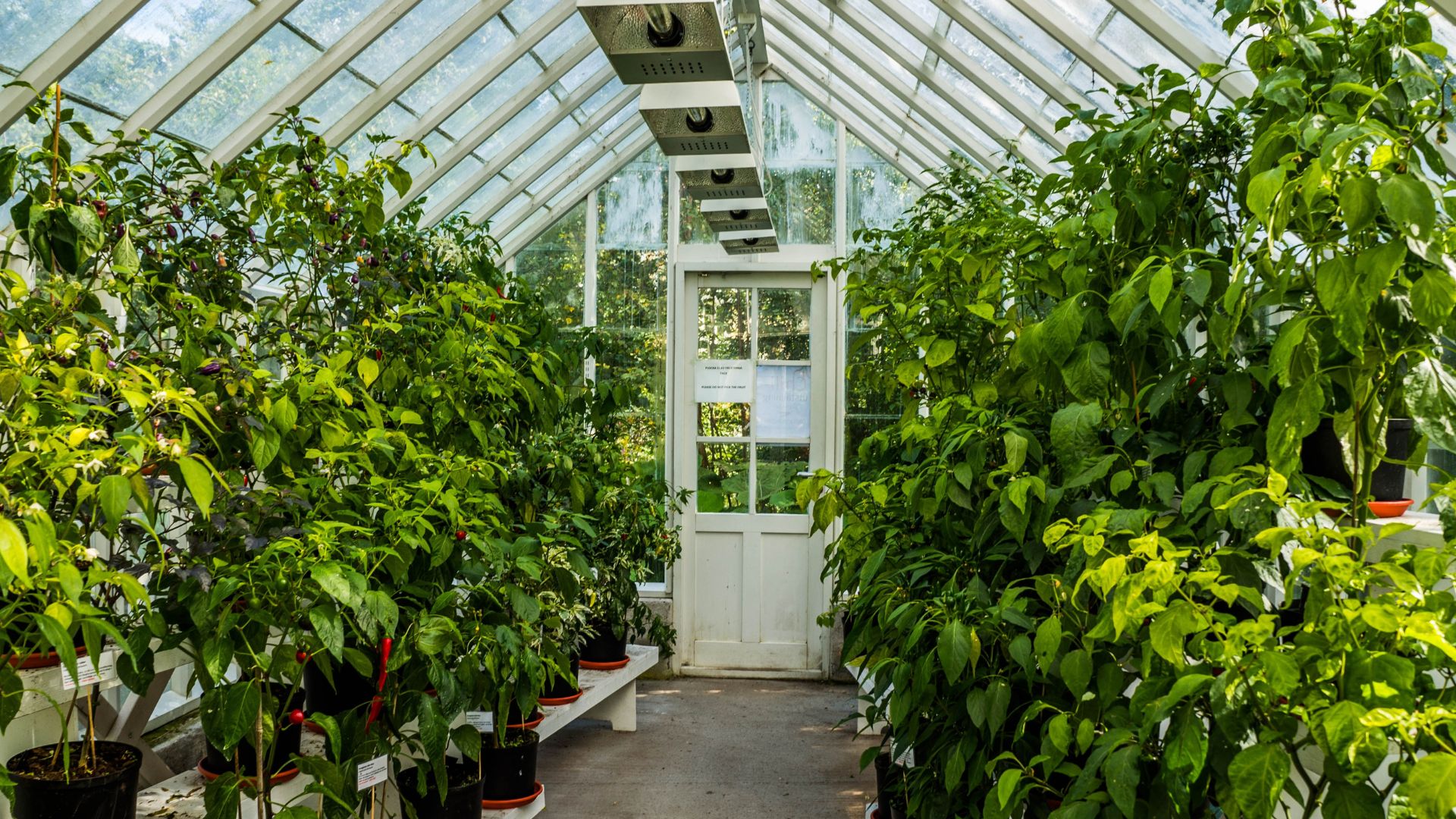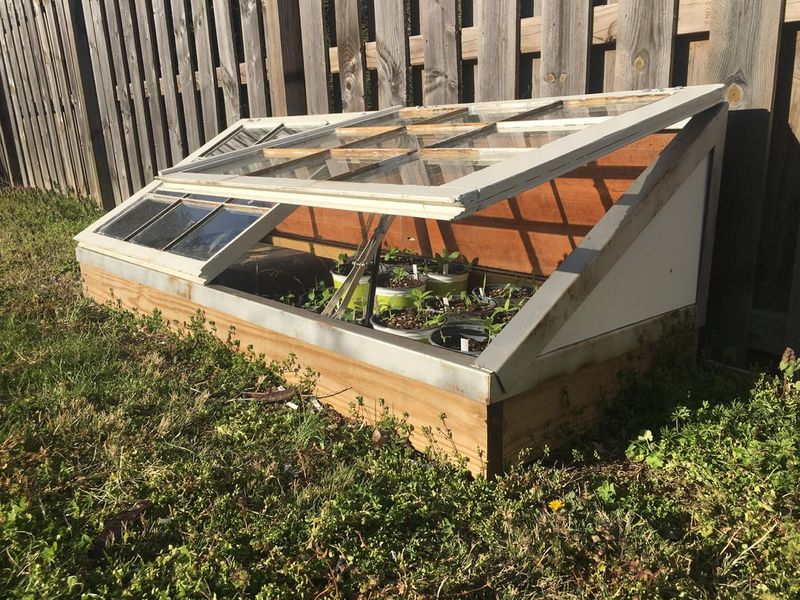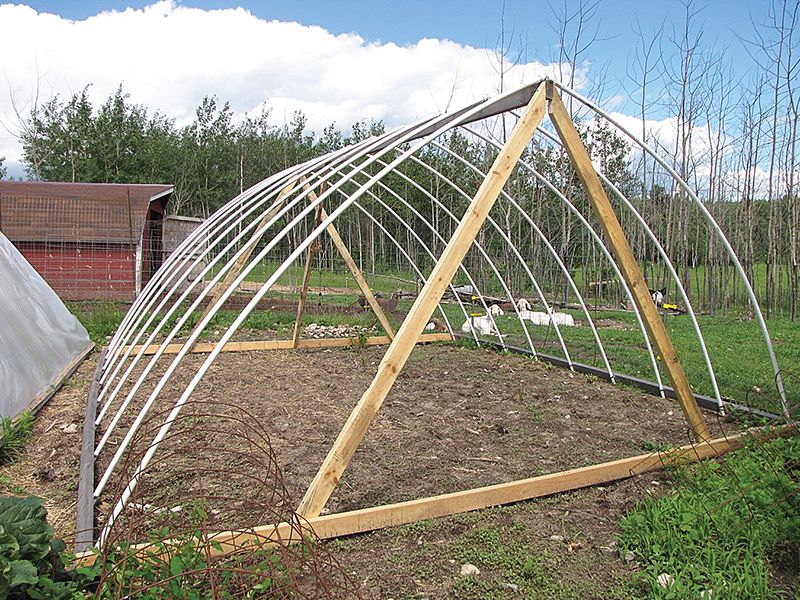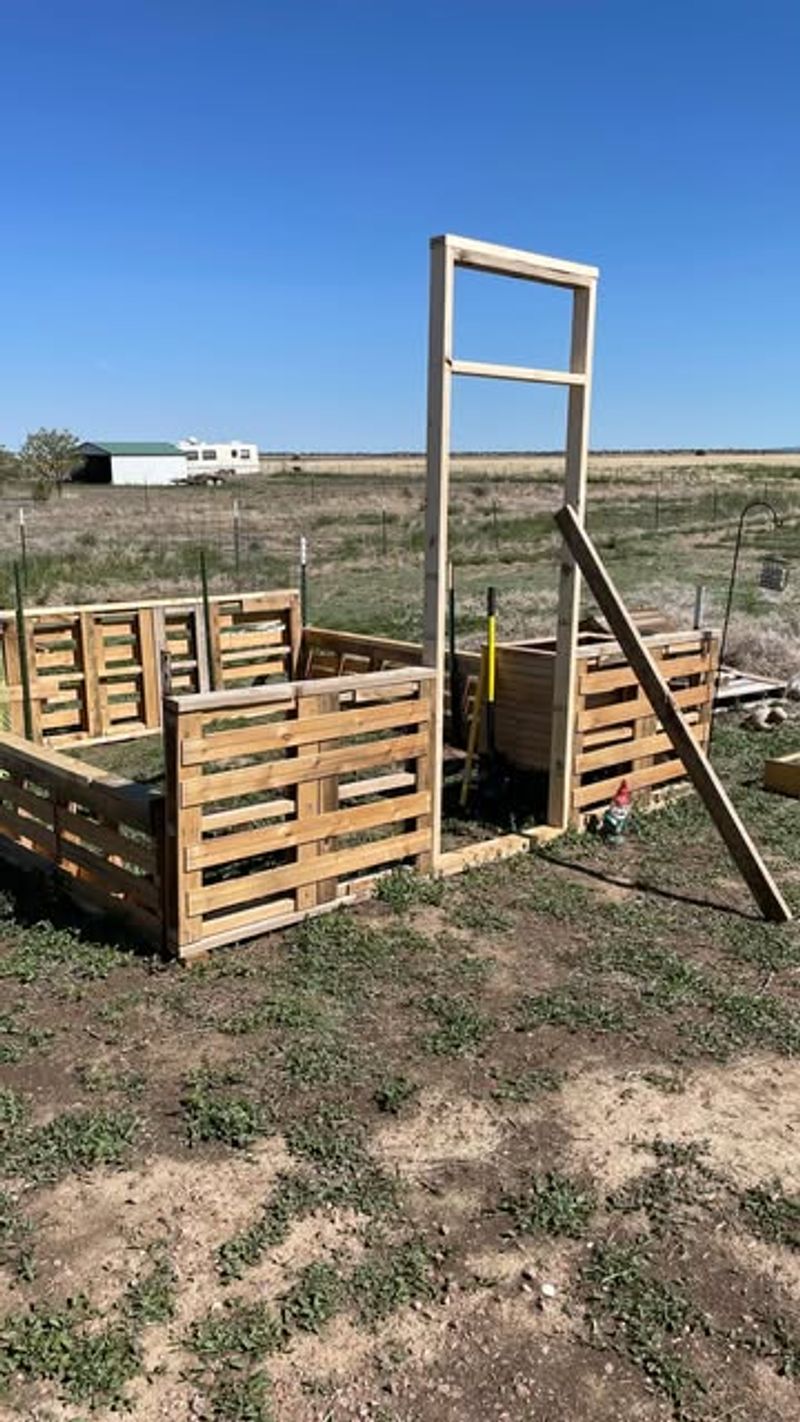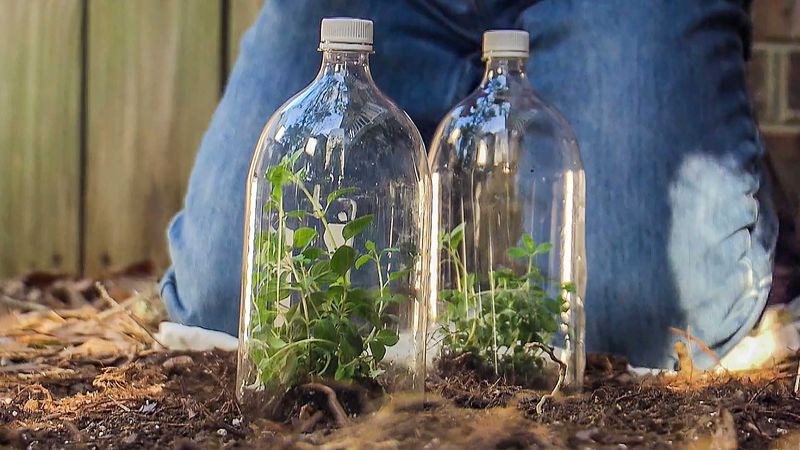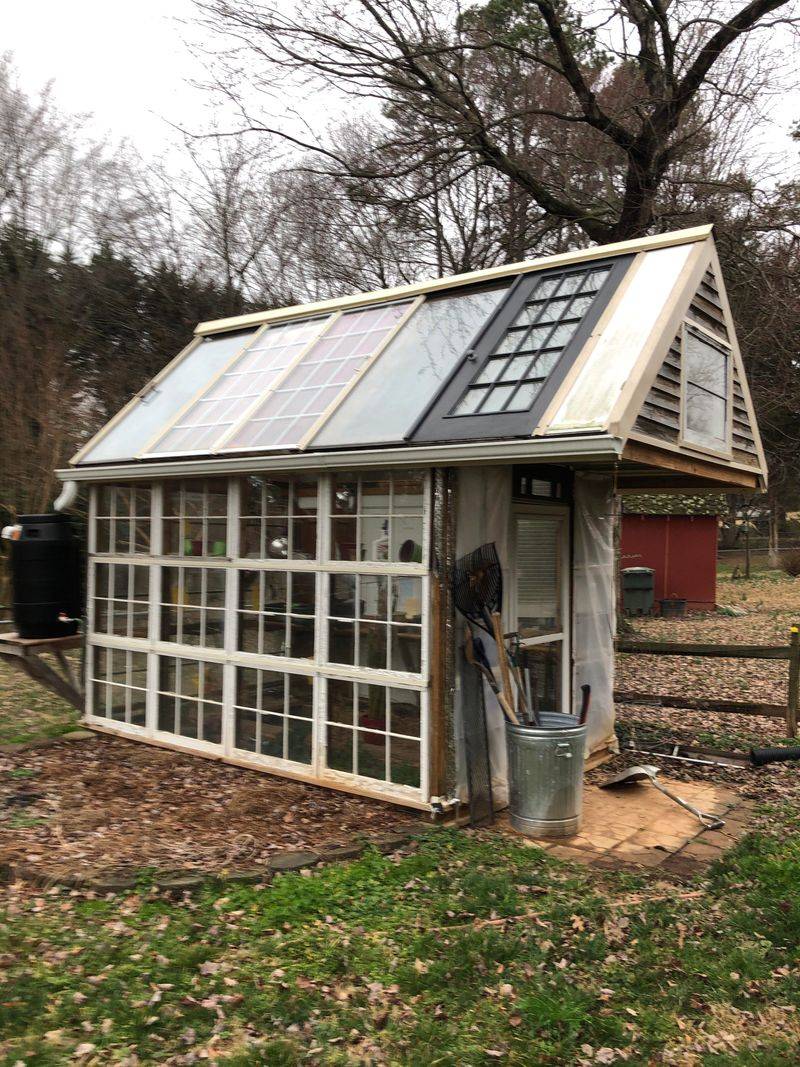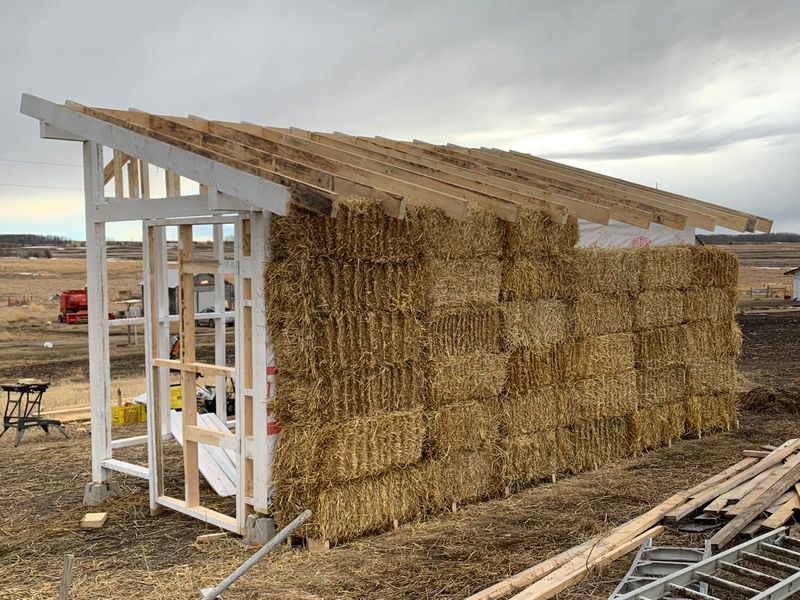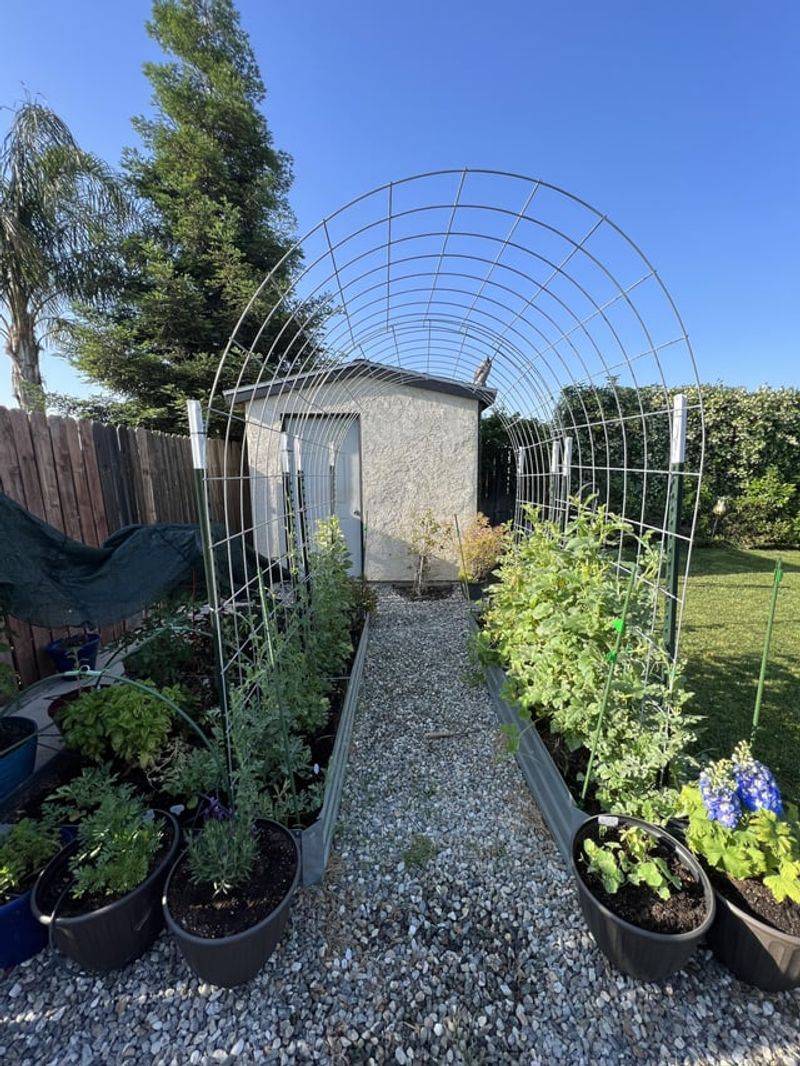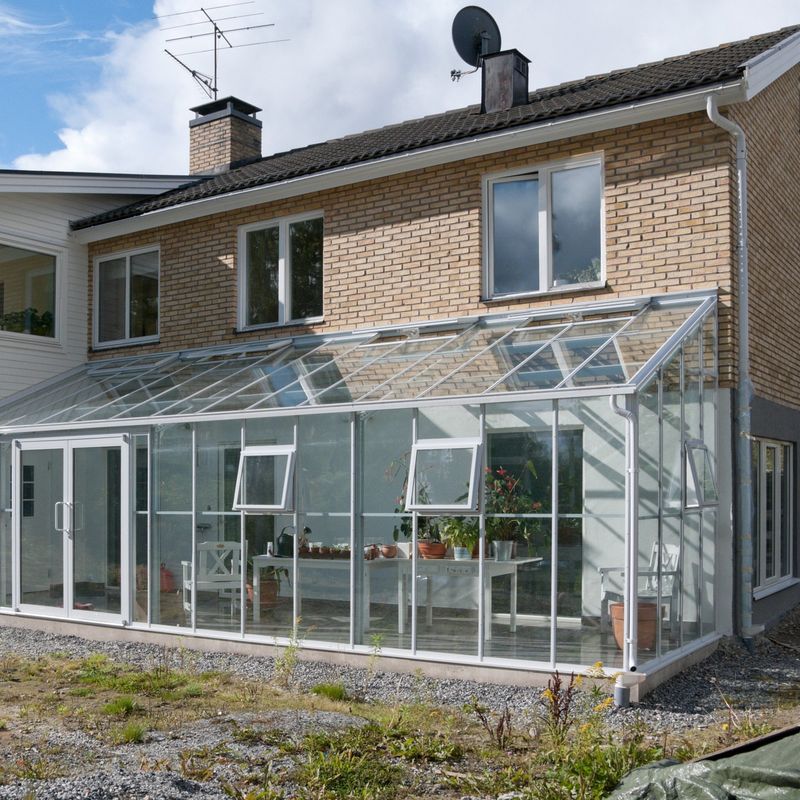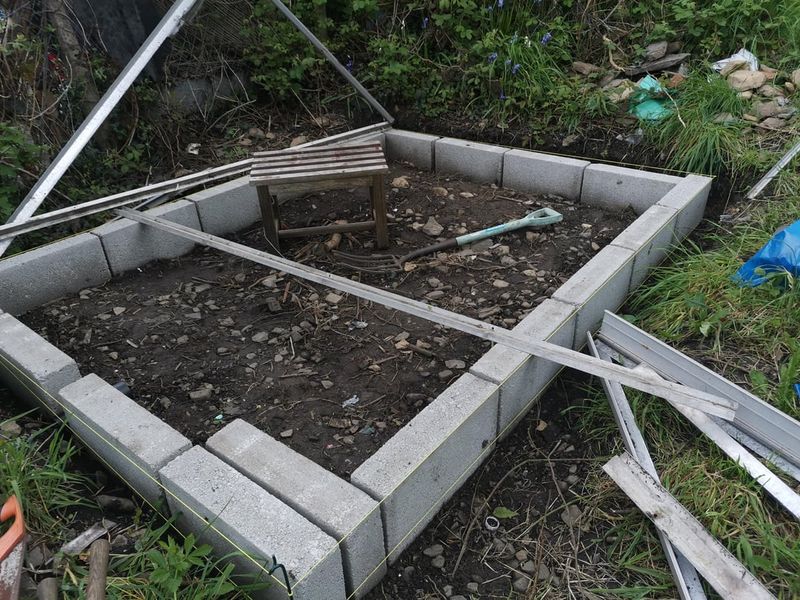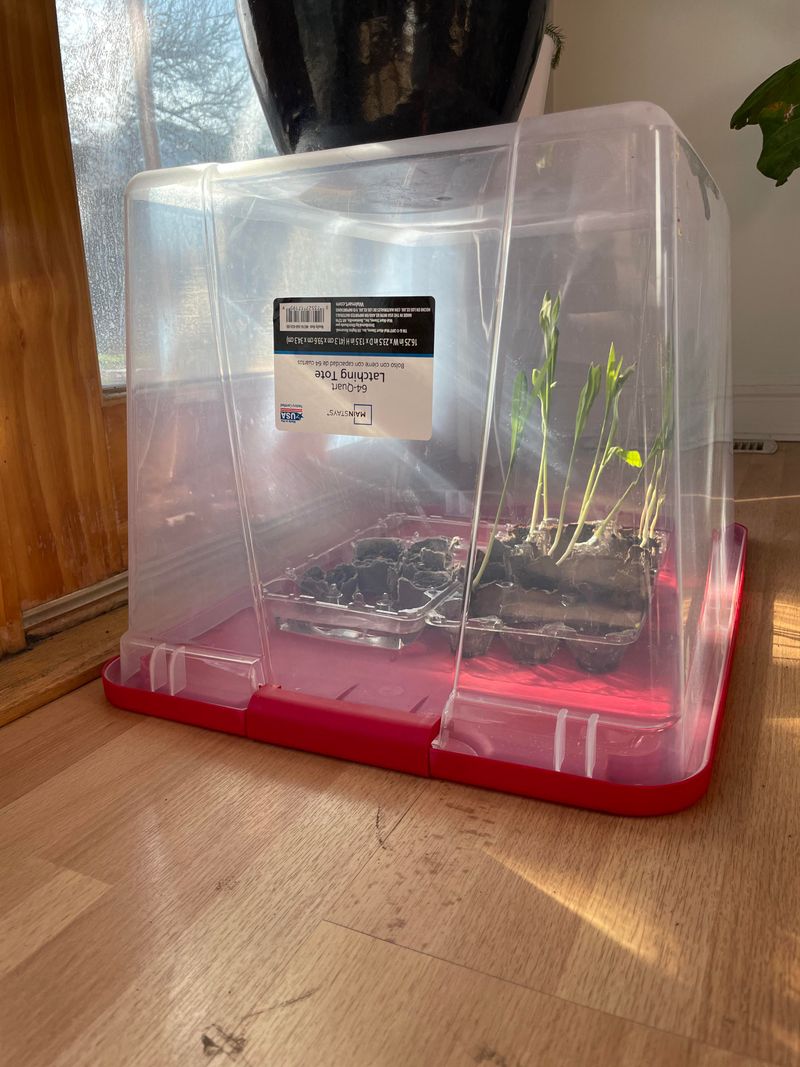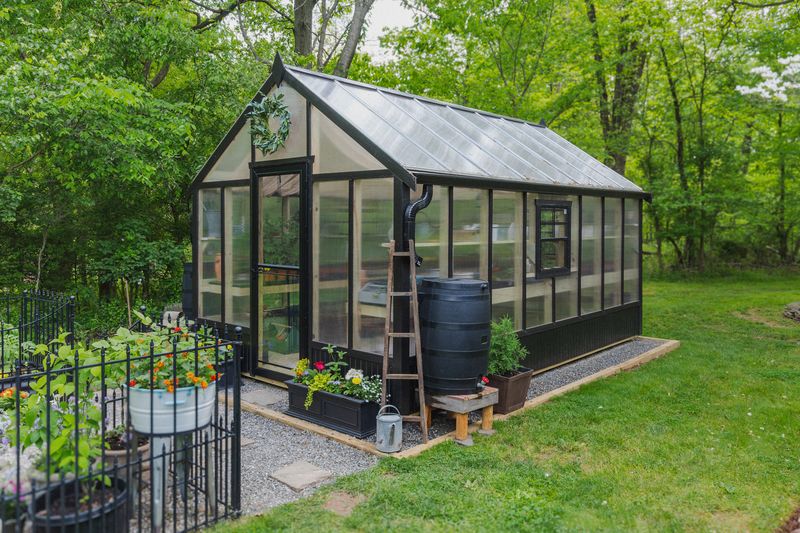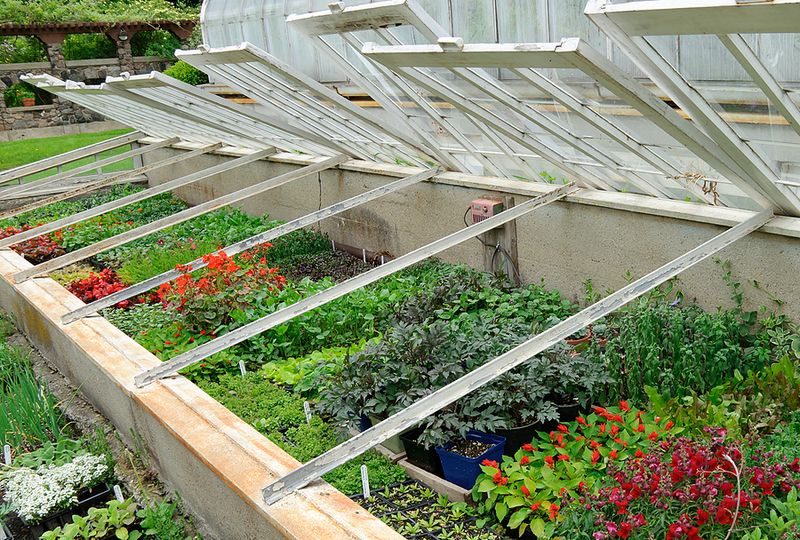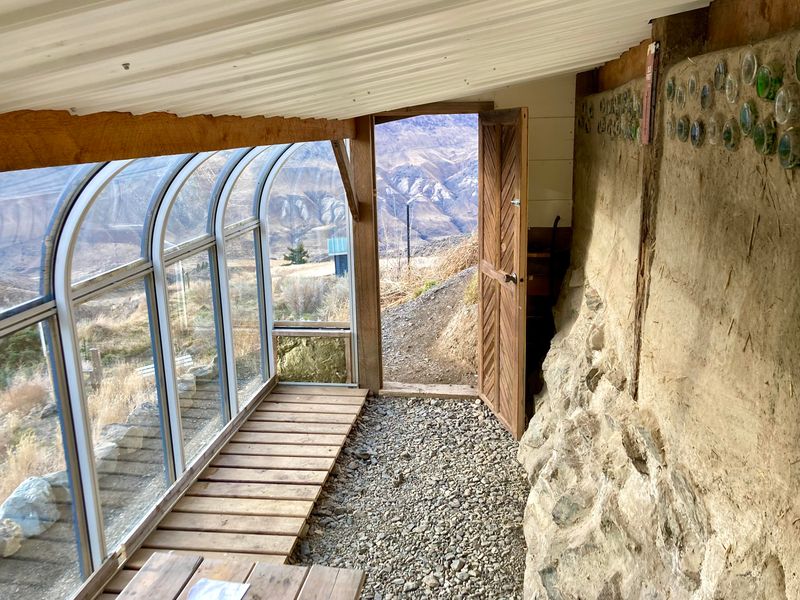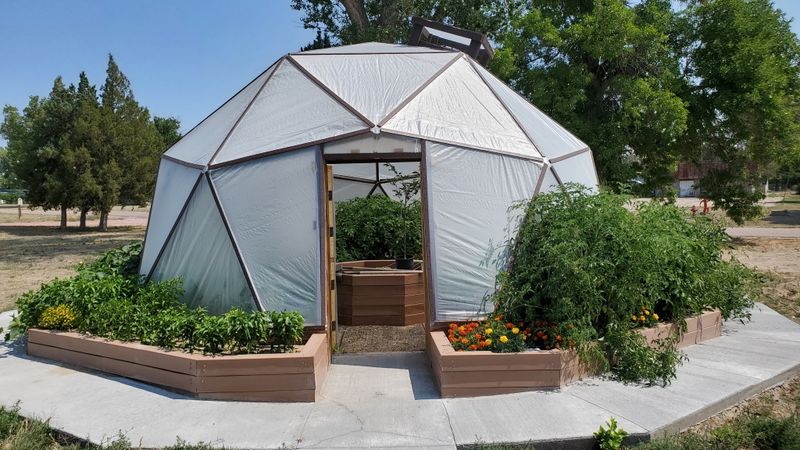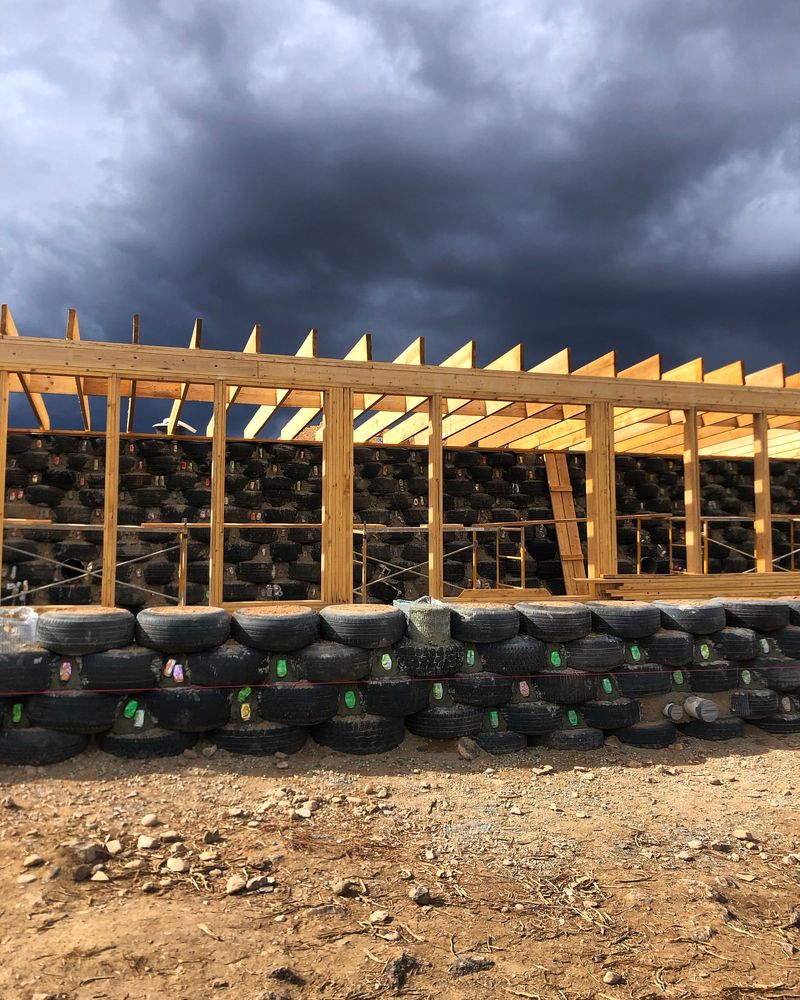Pennsylvania gardeners face unique challenges with our unpredictable weather patterns, late spring frosts, and sometimes short growing seasons.
A backyard greenhouse can be the perfect solution to extend your growing season and protect tender plants from harsh elements. After watching my seedlings get destroyed by a surprise May frost last year, I built a simple window frame greenhouse that completely changed my gardening game.
The good news? You don’t need specialized skills or a huge budget to create a functional greenhouse space in your own Pennsylvania yard.
1. Window Frame Cold Frame
Old windows from home renovation projects make perfect cold frames for Pennsylvania gardens. The glass panes trap solar heat while protecting seedlings from our unpredictable spring weather.
Simply create a box frame with untreated lumber, attach the windows as a hinged lid, and position it facing south for maximum sun exposure. During late winter thaws, this setup lets you start cool-season crops weeks earlier.
My neighbor in Scranton used this design last year and harvested lettuce a full month before her friends with traditional gardens!
2. PVC Pipe Hoop House
PVC pipe creates an affordable backbone for a simple hoop house that stands up to Pennsylvania’s variable conditions. Bend 10-foot lengths of 1/2-inch PVC pipe into arches and secure them over a raised bed.
Cover with greenhouse plastic during colder months or shade cloth during summer. The beauty of this design lies in its adaptability to our state’s rapidly changing seasons.
When heavy snow threatened my early seedlings near Pittsburgh, the rounded shape allowed the weight to slide right off without collapsing the structure.
3. Pallet Greenhouse
Free wooden pallets from local businesses transform into greenhouse walls with minimal effort. Stand four pallets upright in a square, secure at corners, and add a simple pitched roof frame using 2x4s.
Cover with greenhouse plastic or polycarbonate panels. The wooden structure provides excellent insulation against Pennsylvania’s cold winters, especially in the northern counties where temperatures regularly dip below freezing.
My cousin built one near Allentown using pallets from a local garden center, and it withstood 30 mph winds during a nasty November storm!
4. Mini Pop Bottle Greenhouse
Repurpose clear plastic bottles into mini greenhouses perfect for protecting individual plants. Cut the bottoms off 2-liter soda bottles and place them over seedlings as tiny cloches.
For Pennsylvania gardeners dealing with late spring frosts, these mini greenhouses provide crucial protection when unexpected cold snaps hit. Remove the caps for ventilation on warmer days to prevent overheating.
Last April in my Lancaster garden, these bottle protectors saved my tomato seedlings when temperatures suddenly dropped to 36°F overnight.
5. Recycled Door Greenhouse
Old glass doors from renovation projects create stunning greenhouse walls with architectural character. Collect 4-6 matching doors from salvage yards, then arrange them in a rectangular shape, securing at corners with brackets.
Add a simple roof frame covered with polycarbonate panels. The solid construction stands up well to Pennsylvania’s heavy snow loads, especially important in the western regions near Erie.
My friend’s door greenhouse in York became the envy of her community garden—and survived three winters with over 50 inches of snow each season!
6. Straw Bale Cold Weather Greenhouse
Straw bales create natural insulation perfect for Pennsylvania’s cold winters. Arrange bales in a rectangle, then cover with old windows or greenhouse plastic stretched over a simple wooden frame.
The thick walls maintain heat even during bitter January nights. Come spring, the partially decomposed bales can be used as growing medium or composted.
During last year’s polar vortex near Harrisburg, my straw bale greenhouse stayed 20 degrees warmer than outside temperatures without any supplemental heating!
7. Cattle Panel Arched Greenhouse
Cattle panels from farm supply stores create perfect arches for a walk-in greenhouse. Bend the 16-foot panels into half-circles and secure them to a wooden base frame spaced 4 feet apart.
Cover with greenhouse plastic secured with wiggle wire channel. The strong galvanized panels hold up exceptionally well under Pennsylvania’s occasional heavy wet snow, a common concern in the Pocono region.
When my brother-in-law built one near State College, he was amazed how easily he could grow peppers two months longer than his neighbors!
8. Lean-To Window Greenhouse
Utilizing your home’s existing south-facing wall creates a perfect foundation for a lean-to greenhouse. Construct a simple sloped roof frame that attaches to your house below window level, then enclose with salvaged windows or clear panels.
This design takes advantage of your home’s heating system, making it especially effective in Pennsylvania’s heating zone 5-6 regions. The thermal mass of the house wall radiates heat throughout cold nights.
My aunt’s lean-to greenhouse in Doylestown allows her to grow Mediterranean herbs year-round, even during February snowstorms!
9. Cinderblock Base Greenhouse
Cinderblocks create a sturdy, insulating foundation perfect for a more permanent greenhouse structure. Build a rectangular base with cinderblocks, then construct a simple wooden frame on top to support greenhouse panels or plastic.
The thermal mass of the blocks absorbs daytime heat and releases it slowly overnight—ideal for Pennsylvania’s temperature fluctuations. Fill some block holes with soil to grow directly in the walls!
A gardener friend near Bethlehem uses this design and maintains growing temperatures even when outside readings hit single digits in January.
10. CD Case Mini Greenhouse
Remember those plastic CD cases gathering dust? They transform into perfect mini greenhouses for seed starting. Connect multiple cases with duct tape hinges, creating a box-like structure with a lid that opens for ventilation.
These compact greenhouses work beautifully on Pennsylvania windowsills during February and March when it’s still too cold to start seeds outdoors. The clear plastic creates ideal humidity for germination.
I started using this method in my Philadelphia apartment and successfully germinated heirloom tomato varieties weeks before my gardening club friends!
11. A-Frame Polycarbonate Greenhouse
An A-frame design sheds snow efficiently—crucial for Pennsylvania winters. Construct a simple peaked frame using 2x4s, then cover with twin-wall polycarbonate panels that provide excellent insulation while allowing light transmission.
The steep angles prevent snow accumulation, a major advantage in our northeastern counties where heavy lake effect snow can collapse flatter structures. Add shelving along both sides for maximum growing space.
During last winter’s blizzard near Reading, my neighbor’s A-frame greenhouse remained intact while two hoop houses down the street collapsed under the weight!
12. Raised Bed Cold Frame Combo
Existing raised beds easily convert to winter growing spaces with the addition of a cold frame top. Build a simple hinged lid using 1×2 lumber and clear twin-wall polycarbonate that fits over your standard raised bed.
For Pennsylvania gardeners, this design extends the growing season at both ends—starting earlier in spring and continuing later into fall. The soil in raised beds warms faster than ground soil, an advantage in our climate.
My community garden in West Chester uses this system, allowing us to harvest fresh spinach and kale well into December!
13. Embedded Earth-Sheltered Greenhouse
Digging your greenhouse partially into a south-facing hillside—common in Pennsylvania’s rolling landscape—creates natural insulation. Excavate 3-4 feet into a slope, build retaining walls for the back and sides, then construct a standard greenhouse front and roof.
The earth’s thermal mass maintains remarkably stable temperatures despite our state’s weather extremes. The north wall protection significantly reduces heating costs during winter months.
A gardening mentor in the Lehigh Valley uses this design and grows citrus trees year-round without supplemental heat, even in January!
14. Geodesic Dome Greenhouse
Geodesic domes distribute snow loads and withstand wind exceptionally well—perfect for Pennsylvania’s variable climate. Using PVC pipe or electrical conduit, create interconnected triangles following available templates, then cover with greenhouse plastic.
The rounded shape prevents snow accumulation while maximizing growing space and solar exposure. These structures perform admirably in our mountainous regions where weather can change rapidly.
After building one near New Hope, I’ve grown tropical plants through three winters with minimal heating, despite temperatures dropping below zero outside!
15. Tire Wall Greenhouse
Old tires filled with soil create excellent thermal mass walls for a greenhouse foundation. Stack tires in a rectangle, filling each with compacted soil, then build a conventional greenhouse structure on top using wood framing and plastic covering.
The black rubber absorbs solar heat during Pennsylvania’s sunny winter days and radiates it back overnight. This design works particularly well in our northern counties where winter temperatures regularly stay below freezing.
A farmer friend near Gettysburg grows greens all winter in his tire wall greenhouse without any supplemental heat source!

